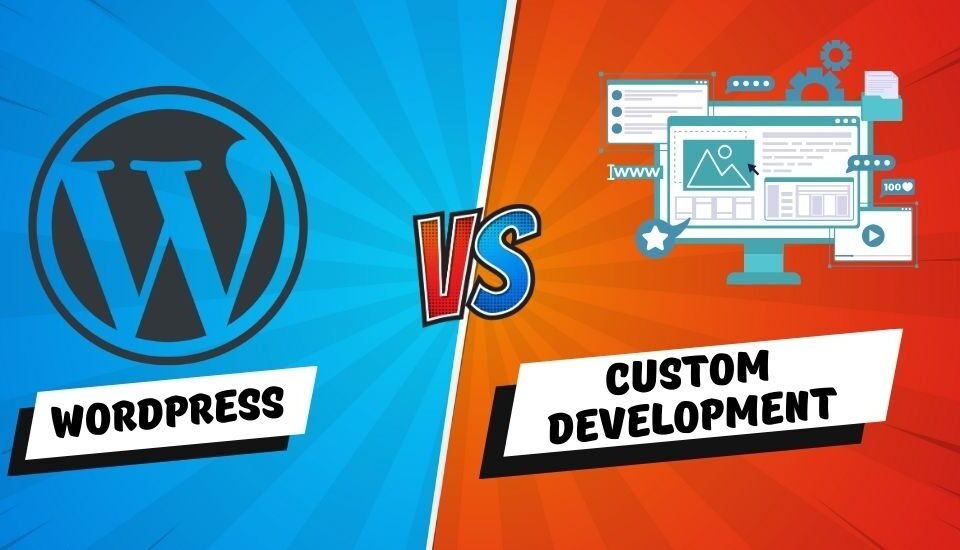- Have any Query ?
- +91-7008562317
- +91-9438140285
- webmaster@sitsindia.co.in
The Rise of Low-Code Development: Democratizing Software Creation

In today’s digital age, software applications have become an integral part of our personal and professional lives. From mobile apps that help us stay organized to complex enterprise systems that run entire businesses, the demand for software solutions continues to grow exponentially. However, traditional software development has long been the domain of skilled programmers and computer science experts, creating a bottleneck in the face of ever-increasing demand. Enter low-code development – a game-changing approach that’s democratizing software creation and revolutionizing the way we build digital solutions.
What is Low-Code Development?
Low-code development is an innovative approach to software creation that allows users to build applications with minimal hand-coding. Instead of writing lines of complex code, developers use visual interfaces and drag-and-drop components to design and build functional applications. This method significantly reduces the technical barriers to entry, enabling a wider range of people to participate in the software development process.
The low-code movement is not about replacing traditional coding entirely. Rather, it’s about providing a more accessible entry point for those who may not have extensive programming knowledge. It’s a bridge between the world of professional developers and the growing number of “citizen developers” – business users who can now contribute directly to the creation of software solutions.
The Rise of Low-Code Platforms
The concept of low-code development isn’t entirely new. Visual programming tools have existed for decades. However, the recent surge in low-code platforms has been driven by several factors:
- Increasing Demand for Digital Solutions: As businesses across all sectors undergo digital transformation, the need for custom software solutions has skyrocketed.
- Shortage of Skilled Developers: The traditional software development workforce hasn’t been able to keep pace with the growing demand, creating a skills gap.
- Advancements in AI and Machine Learning: These technologies have enhanced the capabilities of low-code platforms, making them more powerful and versatile.
- Cloud Computing: The widespread adoption of cloud services has made it easier to deploy and scale applications built with low-code tools.
- The Rise of Citizen Developers: There’s a growing trend of business users wanting to create their own solutions without relying entirely on IT departments.
Benefits of Low-Code Development
The low-code approach offers numerous advantages that are driving its adoption across various industries:
- Faster Development Cycles: Low-code platforms can significantly reduce the time it takes to build and deploy applications. What might take months with traditional coding can often be accomplished in weeks or even days with low-code tools.
- Reduced Costs: By speeding up development and requiring fewer specialized resources, low-code can lead to substantial cost savings in software projects.
- Increased Agility: Low-code platforms make it easier to iterate and make changes quickly, allowing businesses to adapt their software solutions as needs evolve.
- Empowerment of Citizen Developers: Business users can now take a more active role in creating solutions, reducing the burden on IT departments and fostering innovation.
- Standardization and Governance: Many low-code platforms come with built-in best practices and governance features, ensuring consistency across applications.
- Bridging the IT-Business Gap: Low-code development can improve communication between IT teams and business units, as the visual nature of these tools makes it easier for non-technical stakeholders to understand and contribute to the development process.
Real-World Applications of Low-Code Development
The versatility of low-code platforms has led to their adoption across various sectors and use cases:
- Business Process Automation: Companies are using low-code tools to streamline workflows, automate repetitive tasks, and improve operational efficiency.
- Customer-Facing Applications: From e-commerce platforms to customer service portals, low-code is being used to quickly build and iterate on customer-centric solutions.
- Data Analysis and Reporting: Low-code platforms are helping businesses create custom dashboards and reporting tools to make sense of their data.
- Mobile App Development: With the growing importance of mobile experiences, low-code tools are enabling rapid development of cross-platform mobile applications.
- IoT and Edge Computing: As the Internet of Things expands, low-code platforms are being used to create applications that integrate with and manage IoT devices.
- Prototyping and Proof of Concepts: The speed of low-code development makes it ideal for quickly testing new ideas and validating concepts before committing to full-scale development.
Challenges and Limitations
While low-code development offers many benefits, it’s important to acknowledge its limitations and potential challenges:
- Complexity Limitations: While suitable for a wide range of applications, low-code platforms may struggle with highly complex or specialized software requirements.
- Vendor Lock-in: As applications are built using proprietary platforms, there’s a risk of becoming overly dependent on a specific vendor’s ecosystem.
- Performance Concerns: In some cases, applications built with low-code tools may not perform as efficiently as those created with traditional coding methods.
- Security Considerations: While many low-code platforms have robust security features, the ease of development could potentially lead to the creation of applications without proper security measures.
- Resistance from Traditional Developers: Some professional developers may view low-code as a threat to their roles or as an inferior approach to software creation.
- Governance and Standardization: As more users engage in application development, organizations need to establish clear guidelines and governance structures to maintain quality and consistency.
The Future of Low-Code Development
As low-code platforms continue to evolve, we can expect to see several trends shaping the future of this technology:
- AI-Enhanced Development: Artificial intelligence will play an increasingly important role in low-code platforms, offering intelligent suggestions, automating more complex tasks, and even generating code.
- Expansion into New Domains: Low-code tools will likely expand into more specialized areas, such as AI model development, blockchain applications, and virtual/augmented reality experiences.
- Improved Integration Capabilities: Future low-code platforms will offer even better integration with existing systems and data sources, making it easier to create comprehensive, interconnected software ecosystems.
- Focus on User Experience: As competition in the low-code market intensifies, platforms will place greater emphasis on user experience, making their tools even more intuitive and accessible.
- Increased Adoption in Education: Low-code development may become a standard part of digital literacy education, introducing students to software creation concepts from an early age.
- Convergence with Professional Development Tools: We may see a blurring of lines between low-code platforms and traditional development environments, with professional developers leveraging low-code tools to enhance their productivity.
Embracing the Low-Code Revolution
The rise of low-code development represents a significant shift in the software creation landscape. By lowering the barriers to entry and empowering a wider range of individuals to participate in the development process, low-code platforms are democratizing software creation in unprecedented ways.
For businesses, the adoption of low-code development can lead to increased agility, faster time-to-market for new ideas, and more efficient use of resources. It allows organizations to tap into the innovative potential of their entire workforce, not just their IT departments.
For individuals, low-code offers an opportunity to bring ideas to life, solve problems, and contribute to digital innovation without necessarily having to become expert programmers. It’s opening up new career paths and allowing people to add valuable technical skills to their existing domain expertise.
However, it’s important to approach low-code development thoughtfully. Organizations need to consider how to integrate these new tools and methodologies into their existing processes, ensure proper governance and security measures, and strike the right balance between citizen development and professional software engineering.
As we look to the future, it’s clear that low-code development will play an increasingly important role in shaping our digital world. By democratizing software creation, it’s not just changing how we build applications – it’s changing who builds them. This democratization has the potential to unleash a new wave of innovation, as diverse perspectives and domain-specific knowledge are brought to bear on software development.
The low-code revolution is just beginning, and its full impact is yet to be realized. As the technology continues to evolve and mature, it will be exciting to see how it transforms businesses, careers, and our ability to turn ideas into reality. Whether you’re a business leader, an aspiring developer, or simply someone with an idea for an app, the world of low-code development is opening up new possibilities. The question is no longer “Can we build it?” but “What shall we build next?”



